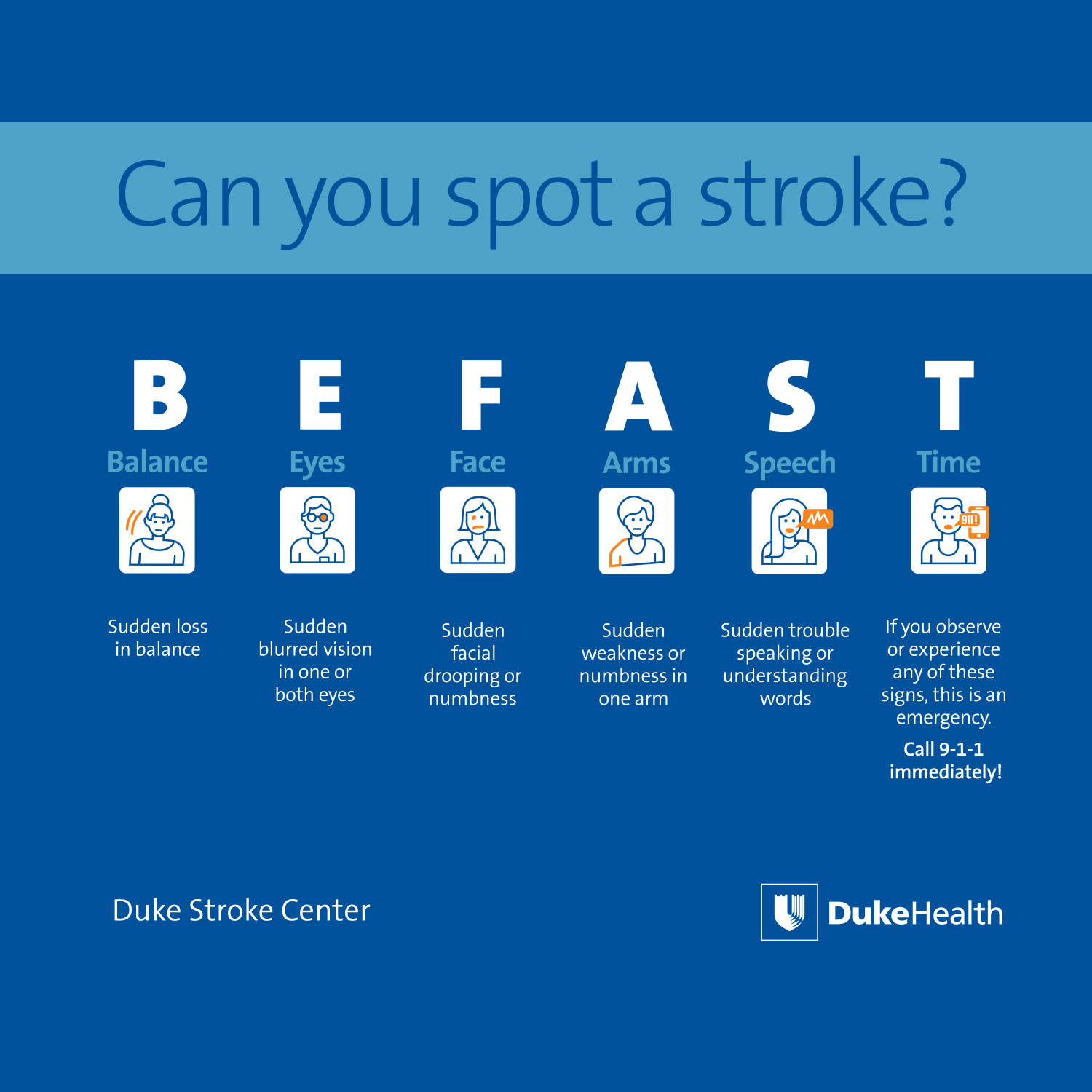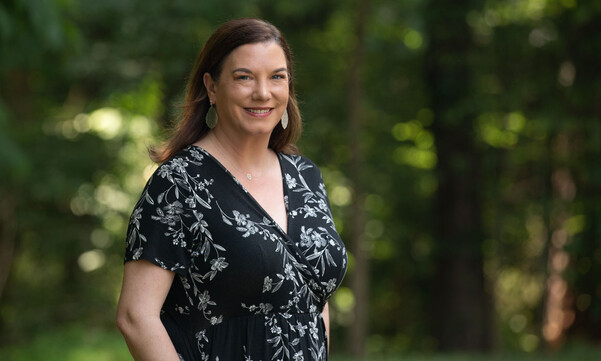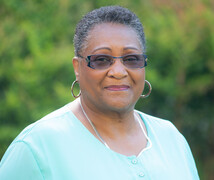When 44-year-old Raleigh resident Andy Beal suddenly became disoriented and weak in the middle of the night, he didn’t realize he was experiencing a “mini-stroke.” The next morning, his wife insisted they go to their local ER. There, he had a full-blown stroke and was quickly transferred to Duke for a procedure that saved his mobility and possibly his life. After recovering completely, Beal is now on a mission to increase awareness about the signs of a stroke.
It’s Probably Nothing
Andy Beal’s initial symptoms were mild -- slight confusion, weakness on his right side, trouble answering simple questions -- and only lasted about 10 minutes. He wanted to shrug them off, but his wife Sheila wasn’t convinced. Online research led her to believe Andy had experienced a transient ischemic attack or TIA, which could mean a big stroke was on the way. She cancelled her tennis plans and drove her husband to their local emergency room. They were there when the stroke happened.
“If my wife had gone about her day that morning, I would have been at home alone and had that stroke. I may not have made it,” Beal said.
The stroke was preventing blood from reaching the left side of Beal’s brain. Doctors refer to this as an occlusion. Beal needed treatment fast. He was transferred by helicopter to Duke University Hospital in Durham where the stroke team was waiting.
“We talk about it like this: time is brain,” said Dr. Fernando Gonzalez, a Duke vascular neurosurgeon who specializes in stroke care. “Every minute you have an artery that is occluded, you’re losing two million neurons...No other emergency in medicine is as time-dependent as stroke.”
Thrombectomy Procedure Removes Clot
When Beal arrived at Duke, the stroke team moved quickly to confirm the left carotid artery in his neck was completely occluded, and he had a blood clot in his brain. Within 45 minutes, Beal was prepped for a thrombectomy. Duke is one of only a handful of accredited and comprehensive programs in North Carolina that offer this potentially lifesaving procedure.
During the procedure, Beal's surgeon inserted a long, thin tube called a catheter into an artery in the groin and threaded it through the circulatory system to the blocked carotid artery. The surgeon inflated a tiny balloon on the end of the catheter to open up the occluded vessel, and a stent was placed to make room for the catheter and to keep the artery open. Then the catheter was guided into the brain, and a mesh device captured and removed the clot.
“Without thrombectomy, his prognosis would have been devastating,” Dr. Gonzalez said. Approximately 80% of people with this type of stroke could die without this procedure, he said.
Just the Beginning
A few days later, Beal walked out of Duke unassisted to return home. He was driving and working several days later. A week after discharge, Beal got test results showing he had experienced a small heart attack at some point before the stroke, and a 70% blockage in a major artery leading to his heart. Duke’s cardiology team put him on an advanced medication regimen for high cholesterol and high blood pressure. They placed a stent in Beal’s artery and implanted a heart monitor.
That was enough for Beal to decide to change his lifestyle. While he’d started eating better and working out about six months before the stroke, he kicked it into high gear afterward. Today he’s 80 pounds lighter and is a weight management specialist and a certified personal trainer.
“Honestly, I never thought I'd ever get to this point,” Beal said. “I play tennis, I run, I mountain bike, I work out with strength training, I go for walks with my wife. I exercise almost too much now.”
Spreading the News
Beal credits his faith for his incredible recovery. “I tell people that God wanted to give me a new testimony, and that is to share the miracle of my stroke,” he said. When he’s not working as a reputation management consultant, he’s spreading the word about stroke signs and what he calls “cardiac prehab” -- optimizing your heart health to prevent a heart attack or stroke from happening in the first place. He's even written a book about these principles, framed with his own experience.
“I think it’s remarkable that Mr. Beal dedicated his personal and professional life to spreading the word that stroke can affect anyone,” Dr. Gonzalez said. “It is not necessarily a disease of older people. He was young at the time he had a stroke. The message he has been sharing is really, really important. Stroke is not just preventable; it’s a treatable disease.”






